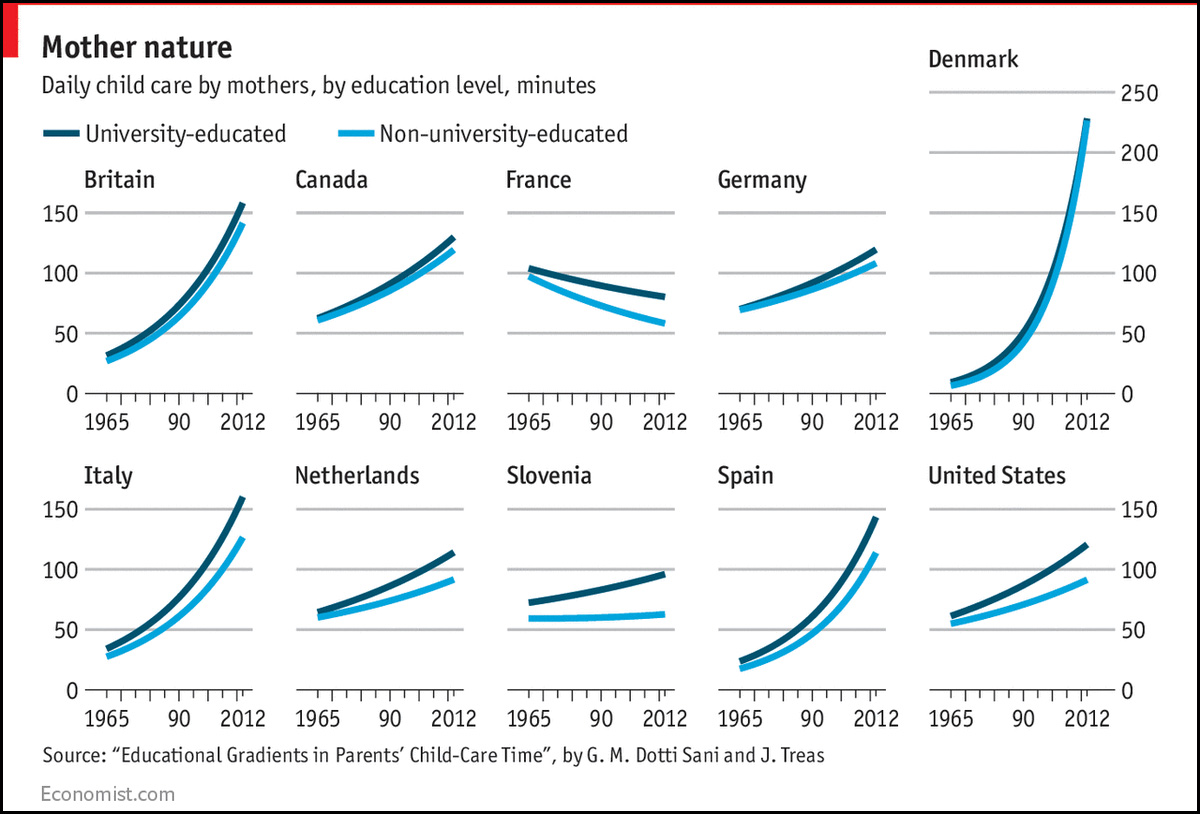Here’s an interesting chart presented recently by the Economist:

There are two overall trends here: (1) over the past few decades, mothers are spending more and more time with their children, and (2) in most countries, mothers now spend about two hours a day with their kids.
But if this data is accurate, there are two huge outliers, one in each direction. In France, childcare time has been declining and is now down to about an hour per day. In Denmark it’s skyrocketed, now averaging about four hours per day. And that’s not all: it’s skyrocketed from a 1965 base of about ten minutes per day. This seems rather unlikely, doesn’t it?
There are several countries with large divergences between college-educated and non-college-educated mothers, but the largest divergence appears to be in the United States. College-educated mothers spend about 120 minutes per day with their kids while non-college-educated mothers spend about 90 minutes.
What this shows, generally speaking, is that as mothers have spent less time on other housework thanks to both modern technology and work outside the home, they’ve filled up that extra time with childcare. That’s probably a good tradeoff. I still have a hard time figuring out how Danish mothers can manage to cram in four hours a day, though.













